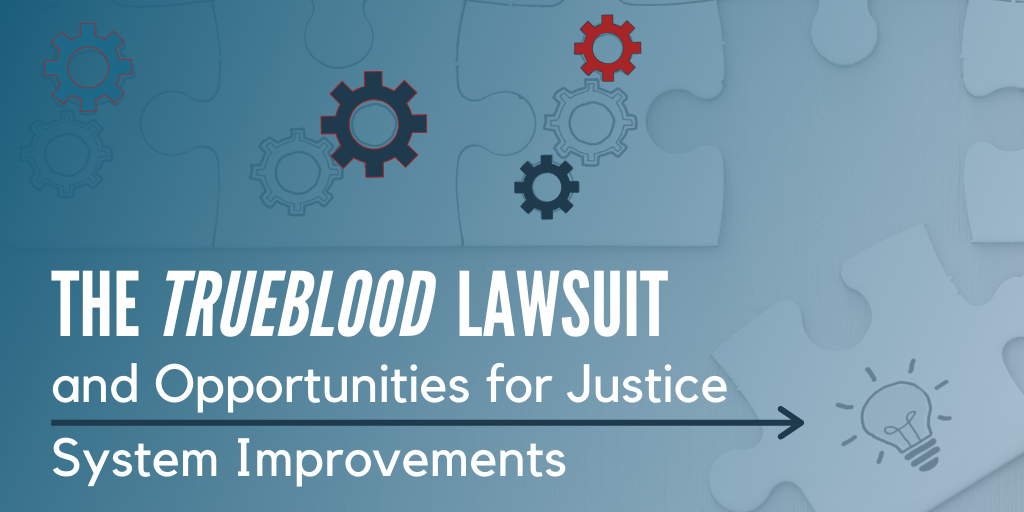By Courtney Hesla, LMHC, Vice President, Comprehensive Healthcare, Yakima, Washington
In 2017, Washington State was given an opportunity to develop diversion efforts, targeting those for whom the question of competency had been raised in regard to recent legal charges. Washington State had been experiencing a significant backlog in completing competency evaluations and restoration services within the timelines of the state statute. Ultimately this resulted in a class-action lawsuit against the state, on behalf of those who had been incarcerated for long periods of time awaiting a competency evaluation and restoration, which at that time was only provided by the two state psychiatric hospitals. This lawsuit would come to be known as the Trueblood lawsuit.
The Trueblood lawsuit resulted in a large accumulation of fines, paid by both state hospitals each day they were out of compliance with fulfilling a competency evaluation or initiating competency restoration treatment. It was decided these fines would be used to fund programs that targeted both reducing the number of days individuals waited for competency evaluations and restoration treatment and the number of competency orders requested. The first of these awards was issued in 2017 and a second and third phase of funding would occur subsequently. Comprehensive Healthcare in Yakima, Washington, was a recipient of both Phase I and Phase III of this funding.
Comprehensive Healthcare is a non-profit, community mental health agency that has a large continuum of care and serves a total of 6 counties. Our services include outpatient and inpatient mental health and substance use treatment for adults and youth, along with residential services, medication-assisted treatment, and crisis services. Comprehensive Healthcare also holds several contracts for a variety of services, including supported living services, extended community services, health home services, and jail-based mental health services.
Supporting the Reentry Process
Having provided mental health services in the jail setting for several years, we understood the complexity of the jail system and the expansive need for both mental health and substance use services within that setting. When we sat down to examine the gaps in our system in order to determine how we might best use these grant dollars, we started with the gaping hole that is the reentry process of those with behavioral health disorders back into the community. For many years our jail-based services saw how those they would refer for treatment upon leaving the jail would not make it to their assessment or follow-up service, only to return to the jail weeks, or sometimes days, later. We thought we could address two issues within the jail setting with these funds. One was to plug the reentry hole by creating positions that we referred to as Intensive Community Services (ICS) Case Managers, who would meet individuals at the jail prior to release, start identifying barriers and resource gaps, and develop a reentry plan that would include picking this person up from their release, and immediately start working on those identified urgent needs.
Screening for Mental and Substance Use Disorders in the Jail
The other issue we wanted to address was the early identification of a mental health or substance use disorder in the jail setting. We thought we could accomplish this by staging behavioral health specialists in the county jail booking area, 7 days a week/24 hours a day, to screen every individual who is booked with an internally-developed screening form that gathered brief mental health and substance use history, current symptomology and concerns, recent medications and medical history, and a few other areas of concern. This information is used by the jail mental health team to identify those who may need an intervention, including getting psychiatric medications started. This information is also forwarded to the Intensive Community Services team who will work with this individual for reentry planning.
What we found with both of these interventions was that early identification assisted with earlier interventions in the jail, including substance use disorder assessments that could then be used to facilitate release from jail right into inpatient SUD treatment. In addition, those who engaged with the ICS team have reduced rates of both new charges and new competency orders. In 2018, those who successfully worked with ICS and were transferred into ongoing behavioral health services had a re-arrest rate of only 11%. Our current average re-arrest rate for those who engaged with ICS is 6.5%. The ICS program is successfully getting individuals enrolled into treatment or reconnected with their treatment services, along with assisting them in re-establishing benefits upon release and following through with probation requirements, which helps keeps the individual from violating those requirements and having to return to jail.
Focus on Early Diversion
In addition to targeting ways to connect individuals to services while incarcerated or immediately upon release, we also looked at what might be done prior to incarceration, at Intercept 0 and 1 of the Sequential Intercept Model. Across the nation, there are law enforcement agencies looking at different ways to address the ever-increasing number of contacts police officers are having with those experiencing a behavioral health crisis. Crisis Intervention Training (CIT) offers an excellent training opportunity for officers to expand their knowledge, skill and tactics when it comes to engaging this population; however, it requires a substantial time commitment from the law enforcement agency and can be difficult to participate in for smaller agencies where removing those officers from the road for 5 days is near impossible. We asked ourselves, what could we do to make the idea of deflection and diversion more of a reality in a circumstance where officers are moving from call to call, facing the pressures of their work, while having to act as social workers?
To tackle this, we met with three local law enforcement agencies and asked if they would consider having what Washington refers to as designated crisis responders (DCR) ride with an officer for their shift, available to assist in any manner that was deemed appropriate. It is fair to say that all of the agencies were cautiously optimistic; the leadership much more optimistic than the officers themselves. We spoke with the officers in advance to explain our rationale for this concept and had faith that this would have an immediate impact on their work. We prepped our DCRs with training by the departments to which they were assigned, and we all met routinely to talk about the culture of law enforcement and how, as mental health professionals, we could navigate that successfully. The importance of putting the right person into this type of position cannot be emphasized enough. We had each department participate in our interviews and we routinely asked for feedback from them on the DCR’s performance. This effort would not work without trust and results; law enforcement would need to trust that the DCR would follow the training provided and the officer’s instructions in order to remain safe, and the officers would have to see that the DCR’s presence was useful. Within weeks, the officers that were suspicious became the loudest supporters. It took a very short amount of time for officers to experience the various way that having a mental health professional immediately available was of benefit to them.
Embedding DCRs into the cars of police officers provides an immediate opportunity to assess the needs of an individual, determine if a higher level of care is needed (hospitalization), and facilitate the individual in getting connected with services. On these calls, officers can take a back seat in the interaction, which decreases the anxiety of the individual and reduces the instances of escalation by officers. This interaction provides opportunities to consider diversion options when appropriate, and more frequently allows for deflection from the justice system. Law enforcement agencies can opt to create co-responding teams that target high call volume areas to be both proactive and to become a familiar presence in that area. In our case, the DCRs can leverage our agency’s resources to follow up with those that they have contact with, as well as alert those who may be involved in that person’s care.
We have been able to identify the various gaps within our local system and create opportunities to contact those who have fallen through these gaps at various intercept points. These methods are not reimbursed through traditional Medicaid pathways and therefore it is important for not only the local community to support efforts such as these, but also for the system to change in recognition of the complex needs of these individuals.
Like what you’ve read? Sign up to receive the monthly GAINS eNews!


